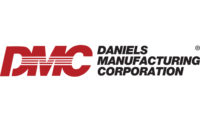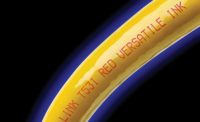Wire and cable insulation is typically made from thermoplastics, thermosets or fibrous coatings such as fiberglass and fiber-braiding. Unfortunately for manufacturers, inks and coatings do not print or bond well to most of these materials when using standard techniques.
There are several reasons for this. The materials have low levels of surface polarity, as well as poor wettability and adhesion properties. In addition, the materials usually do not receive surface modification prior to marking and coding, and they are sometimes exposed to a harsh or extreme environment that adds stress and further prevents adhesion. These limitations make it difficult for some manufacturers, such as those in the automotive and aerospace industries, to apply high-performance marking to their wire and cable harnesses.
However, research by Enercon Industries Corp. shows that atmospheric-plasma surface treatments can overcome these limitations and optimize the adhesion properties of insulation materials. The treatments achieve this by improving the physical and chemical adherence of ink and coating interfaces.
Importance of Surface Energy
Manufacturers need to understand the importance of a material’s surface energy. In fact, how well an ink (for marking or coding) or coating adheres to insulation depends a great deal on whether it is polar, low-polarity or nonpolar.
Polar surfaces have a positive or negative charge, and they adhere best to polar inks and coatings. This is because, when polar materials are brought together, a strong dispersive force is created across the entire interface. Polyurethanes, for example, are more conducive to printing and coating with polar polyurethane- or acrylic-based inks and coatings than nonpolar ones.
Nonpolar materials are charge-neutral and require a chemical, diffusive or mechanical surface treatment to improve adhesion. Frequently used low-polarity or nonpolar materials are thermoplastic olefins (TPOs), Teflon and polyetheretherketone (PEEK).
TPOs are made of low-polarity polyolefins, such as polyethylene and polypropylene, and do not have charged molecules for surface interaction. As a result, polar inks and coatings do not adhere well to TPOs and can be removed easily when dried or cured.
Teflon is a low-polarity polymer that contains highly electronegative fluorine atoms. Used in high-performance applications, Teflon presents many challenges to ink and coating manufacturers. Because Teflon’s net dipole moment (the sum of the individual positive and negative charges within the molecule) is zero, the material is completely nonpolar and, therefore, has no inherent charge to attract an ink or coating.
PEEK is another high-performance, low-polarity polymer. It is ideal for applications requiring high heat resistance and dimensional stability. However, its high chemical resistance presents significant ink-adhesion challenges.
Plasma Treatments Improve Adhesion
Traditionally, several methods have been used to modify insulation and improve its printability. These include the application of low-pressure plasma or chemical primers; and exposure to infrared or ultraviolet light, ozone, ion beams, and gamma and X-rays. Unfortunately, these methods are costly to apply in terms of hardware and consumables, and they tend to suppress line speed.
In contrast, inline atmospheric plasma treatments require low capital expenditure and operating costs. Three techniques are available, which use either blown ion, flame or variable chemistry (gas-phase) plasmas.
During the treatment, charged electrons or positive ions are projected onto the insulation at a velocity and density high enough to promote free radicals and chemically modify the material surface. Surface cleaning and roughening also occur.
Surface polarity is raised, improving the probability of ink wetting and adhesion. This is very important because adhesion chemistry proves that the better an ink wets out, the larger surface area it covers. In addition, the treatment allows more reactive interactions and increases bond strength.
A blown ion plasma treatment uses air as its process gas to generate ions and create physical etching, cleaning and oxidizing surface effects.
The flame plasma treatment combusts air with a hydrocarbon gas to form an intense blue flame, which contains energized particles such as ether, ester, carbonyl, carboxyl and hydroxyl. Brief exposure to these particles affects the distribution and density of electrons on the insulation and polarizes surface molecules through oxidation.
The variable chemistry (gas-phase) plasma treatment leverages the ionization of gases diffused between the electrodes and insulation to perform a wide range of surface modifications. These include breaking down and removing low-molecular-weight organic materials on the insulation, performing fine etching, and grafting molecules or chemicals. Modifications occur at temperatures slightly above ambient but do not suppress production processing speeds.



